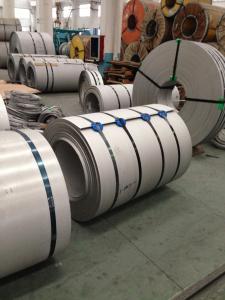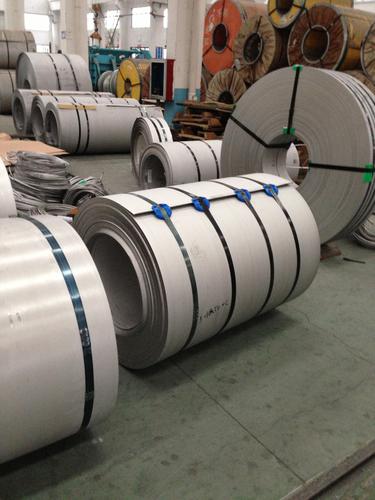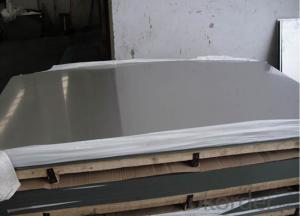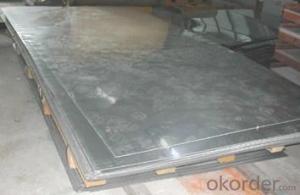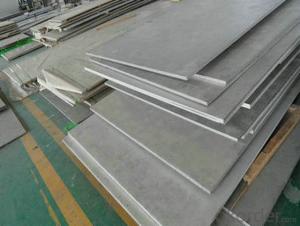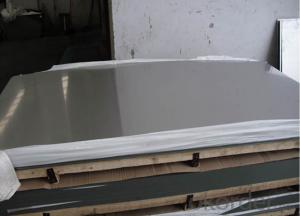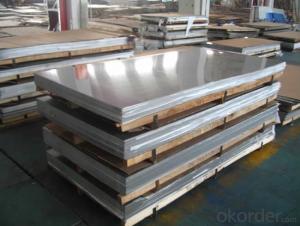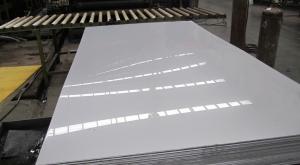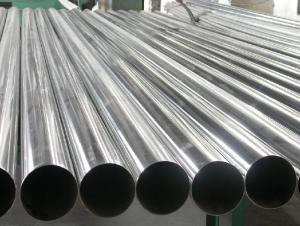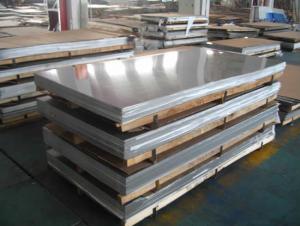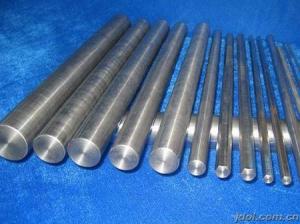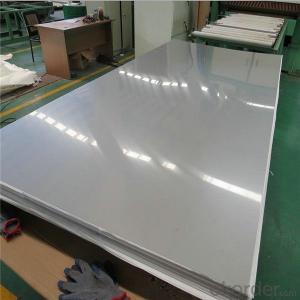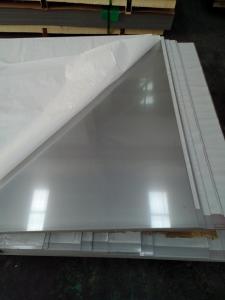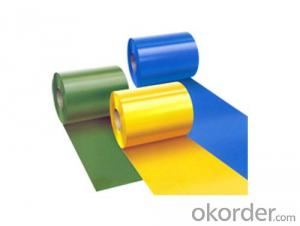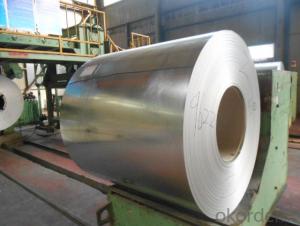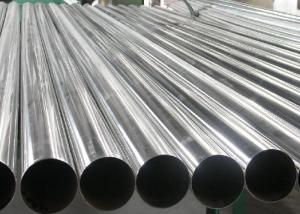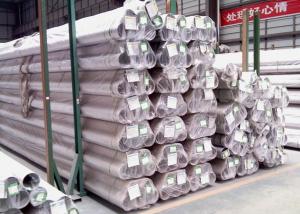Stainless Steel Sheet Col Plate Best Price
- Loading Port:
- Shanghai
- Payment Terms:
- TT or LC
- Min Order Qty:
- 3 m.t.
- Supply Capability:
- 5000 m.t./month
OKorder Service Pledge
OKorder Financial Service
You Might Also Like
1.Structure of Product Description
hot rolled and hot drawn and cold drawn Cold rolled Stainless sheet and plate is widely used in the field of conuction field and decoration field, etc. There are many different grades, such as: 200 series, 300 series, 400 series, etc. The detailed grade are as 202, 301, 304, 316, 410, 420, 430, etc.
The surface is including 2B, BA, Mirror,etc.
2. Main features of the product
a. Competitive price
Service.
c. Shortest service.
3. Image.

4. Product detailed sizes:
1000mm*2000mm,1250mm*2500mm,1500mm*3000mm, etc.
5. FAQ:
What is the quality standard?
---Usually our standard is GB3880-2006 or else.
What is the width range?
---It is from 1000mm to 2500mm, etc.
What is the length range?
---It is from 2000mm to 6000mm, etc.
What is the MOQ for your products yet?
---Normally it is around 3 tons/each size.
How many tons did you export in one year?
---Normally it is around 9000 tons totally.
Where is your client from?
---Normally it is from Japan, USA, ENGLISH, SINGAPORE, ETC.
What is your mainly products?
---Normally they are stainless steel sheet, stainless steel coil, stainless steel checkered sheet, stainless steel mirror finished sheet, color coated stainless steel sheet, etc.
- Q: Can stainless steel sheets be used in high-temperature environments?
- Stainless steel sheets are capable of being utilized in high-temperature environments. The heat resistance properties of stainless steel are well-known, rendering it suitable for various applications in such environments. The maximum operating temperature of stainless steel and its composition are determined by the specific grade used. Austenitic stainless steels, such as grades 304 and 316, possess the ability to endure temperatures up to 1600°F (870°C) without compromising their mechanical strength or corrosion resistance. In contrast, higher alloyed stainless steels like grades 309 and 310 are specifically engineered to handle higher temperatures, reaching approximately 2100°F (1150°C). These stainless steel sheets find common use in industries such as power generation, chemical processing, furnace manufacturing, and aerospace, where exposure to extreme heat is necessary.
- Q: Can stainless steel sheets be used for wire mesh?
- Certainly, wire mesh can be made from stainless steel sheets. Stainless steel, being a highly versatile material, finds extensive usage across numerous applications owing to its exceptional durability, resistance to corrosion, and strength. Once stainless steel sheets undergo processing to transform into wire mesh, they acquire a robust and dependable mesh structure. Industries like construction, agriculture, mining, and filtration often employ stainless steel wire mesh due to its remarkable ability to endure harsh environments, withstand rust and corrosion, and uphold its structural integrity throughout time.
- Q: What are the different surface textures available for stainless steel sheets?
- There are several different surface textures available for stainless steel sheets, including brushed, mirror, satin, embossed, and patterned.
- Q: What are the benefits of using brushed stainless steel sheets in hospitality design?
- There are several benefits of using brushed stainless steel sheets in hospitality design. Firstly, brushed stainless steel sheets add a sleek and modern aesthetic to any space. The brushed finish creates a unique texture and visual appeal, making it a popular choice in contemporary design. This material can elevate the overall look and feel of a hospitality establishment, giving it a sophisticated and upscale ambiance. Secondly, brushed stainless steel sheets are highly durable and long-lasting. Stainless steel is known for its resistance to corrosion, scratches, and stains. In a high-traffic environment like a hotel or restaurant, where there is constant use and potential for spills, this durability is crucial. These sheets can withstand the wear and tear of daily use, ensuring they maintain their pristine appearance for years to come. Thirdly, brushed stainless steel sheets are easy to clean and maintain. They are non-porous, meaning they do not absorb liquids or odors. This makes them hygienic and suitable for use in hospitality settings where cleanliness is of utmost importance. A simple wipe down with a mild detergent is usually sufficient to remove any dirt or smudges, making it a practical choice for busy establishments. Additionally, brushed stainless steel sheets are available in a variety of finishes and colors, allowing for creative customization. This versatility enables designers to incorporate them into various design schemes, whether it be a minimalist, industrial, or even a more traditional look. The ability to choose from different textures and shades ensures that brushed stainless steel sheets can seamlessly integrate with the overall design concept of a hospitality space. Lastly, brushed stainless steel sheets are environmentally friendly. Stainless steel is fully recyclable, making it a sustainable choice in design. By opting for this material, hospitality establishments can contribute to reducing waste and minimizing their environmental footprint. In conclusion, the benefits of using brushed stainless steel sheets in hospitality design are numerous. From its aesthetic appeal and durability to its ease of maintenance and environmental sustainability, this material is an excellent choice for creating a stylish and functional space in the hospitality industry.
- Q: How do I prevent galling on stainless steel sheets?
- To prevent galling on stainless steel sheets, there are several steps you can take: 1. Lubrication: Apply a suitable lubricant to the stainless steel sheets, especially in areas where they come into contact with other surfaces or materials. Lubrication reduces friction and helps prevent galling. 2. Avoid using similar metals: When stainless steel sheets come into contact with other stainless steel surfaces, galling can occur due to the transfer of metal particles. To prevent this, try to use dissimilar metals or non-metallic materials that are compatible with stainless steel. 3. Surface finish: Ensure that the stainless steel sheets have a smooth surface finish. Rough surfaces can increase friction and the likelihood of galling. Consider using polishing or grinding techniques to achieve a smoother surface. 4. Control contact pressure: Excessive pressure between stainless steel sheets can lead to galling. Try to minimize contact pressure by adjusting clamping forces or using gaskets, washers, or other materials that distribute the load evenly. 5. Slow down the sliding speed: High sliding speeds can contribute to galling. Slowing down the movement or using anti-galling coatings can reduce the risk of galling on stainless steel sheets. 6. Regular maintenance: Inspect the stainless steel sheets regularly for signs of wear or damage. Address any issues promptly to prevent further damage that could lead to galling. By following these preventive measures, you can significantly reduce the occurrence of galling on stainless steel sheets, ensuring their longevity and optimal performance.
- Q: What is the thickness range available for stainless steel sheets?
- The thickness range available for stainless steel sheets typically varies from 0.4mm to 6mm, depending on the specific requirements and applications.
- Q: How do you cut stainless steel sheets?
- Different methods can be employed to cut stainless steel sheets, depending on the sheet's thickness and the desired level of precision. Here are several commonly used techniques: 1. Manual cutting: Thinner stainless steel sheets (up to approximately 16 gauge) can be cut using handheld shears or tin snips. These tools allow for straight or curved cuts by applying pressure and slicing through the sheet. However, this approach may not be suitable for thicker sheets due to its labor-intensive nature and the potential for producing rough edges. 2. Power shears: When dealing with thicker stainless steel sheets, power shears or electric nibblers prove more efficient. These tools employ a sharp cutting blade or punch to make straight or curved cuts. They offer greater precision and require less effort compared to manual cutting methods. 3. Circular saw: Stainless steel sheets of increased thickness can also be cut using a circular saw outfitted with a carbide-tipped blade specifically designed for metal cutting. This method allows for straight cuts but may generate more noise, sparks, and heat. Consequently, appropriate safety measures, such as wearing protective goggles and gloves, should be taken. 4. Plasma cutting: Plasma cutting is commonly utilized for industrial or heavy-duty applications. This technique involves employing a high-temperature plasma jet to melt through the stainless steel sheet, generating a precise and clean cut. However, plasma cutting machines are expensive and necessitate specialized training in operation. Irrespective of the chosen method, it is crucial to prioritize safety when cutting stainless steel sheets. Always wear protective gear, such as safety glasses, gloves, and a dust mask, to safeguard against metal shards, sparks, and dust. Moreover, ensure that the sheet is securely clamped or supported to prevent any movement during the cutting process.
- Q: What is stainless steel AB board, please?
- It should be said that BA (Bright, Annealing, bright annealing) plate, and 2B plate difference is that annealing process is different, 2B using annealing and pickling combination process, BA using hydrogen protection, annealing under anaerobic environment. The rolling process and leveling process of the two surfaces are also different.
- Q: What are the benefits of using embossed stainless steel sheets?
- There are several benefits of using embossed stainless steel sheets. Firstly, embossed stainless steel sheets offer enhanced aesthetic appeal. The embossed patterns on the surface of the stainless steel sheet add a unique texture and visual interest to any space. This can help to create a more visually appealing and modern look in both residential and commercial settings. Additionally, embossed stainless steel sheets provide increased durability and strength. Stainless steel is already known for its excellent resistance to corrosion, staining, and wear. The embossing process further enhances the strength and durability of the sheets, making them suitable for high traffic areas or areas where there is a risk of damage or impact. Another benefit of using embossed stainless steel sheets is their versatility. These sheets can be used in a wide range of applications, including wall cladding, elevator panels, kitchen backsplashes, furniture, and architectural features. They can be easily cut and shaped to fit different design requirements, making them a versatile choice for various projects. Furthermore, embossed stainless steel sheets are easy to clean and maintain. The smooth surface of the embossed patterns makes it easier to wipe away dirt, grime, and fingerprints, ensuring a clean and hygienic surface. This is especially beneficial in areas where cleanliness is a priority, such as kitchens or healthcare facilities. Lastly, embossed stainless steel sheets are environmentally friendly. Stainless steel is a highly sustainable material as it is 100% recyclable, and the embossing process does not generate any waste or harmful byproducts. This makes embossed stainless steel sheets an eco-friendly choice for those looking to reduce their carbon footprint and contribute to a greener environment. In conclusion, the benefits of using embossed stainless steel sheets include enhanced aesthetic appeal, increased durability and strength, versatility in applications, easy maintenance, and eco-friendliness. These sheets are a great choice for those seeking a durable, stylish, and sustainable material for their projects.
- Q: Can stainless steel sheets be used for elevator doors?
- Yes, stainless steel sheets can be used for elevator doors. Stainless steel is a popular choice for elevator doors due to its durability, corrosion resistance, and aesthetic appeal. It is able to withstand the wear and tear associated with daily use and is resistant to scratches, dents, and stains. Stainless steel also offers a sleek and modern look, making it a suitable material for elevator doors in various settings such as commercial buildings, residential complexes, and hotels. Additionally, stainless steel sheets can be customized to meet specific design requirements, allowing for a wide range of finishes, textures, and patterns to be applied, further enhancing the overall appearance of the elevator doors.
Send your message to us
Stainless Steel Sheet Col Plate Best Price
- Loading Port:
- Shanghai
- Payment Terms:
- TT or LC
- Min Order Qty:
- 3 m.t.
- Supply Capability:
- 5000 m.t./month
OKorder Service Pledge
OKorder Financial Service
Similar products
Hot products
Hot Searches
Related keywords
